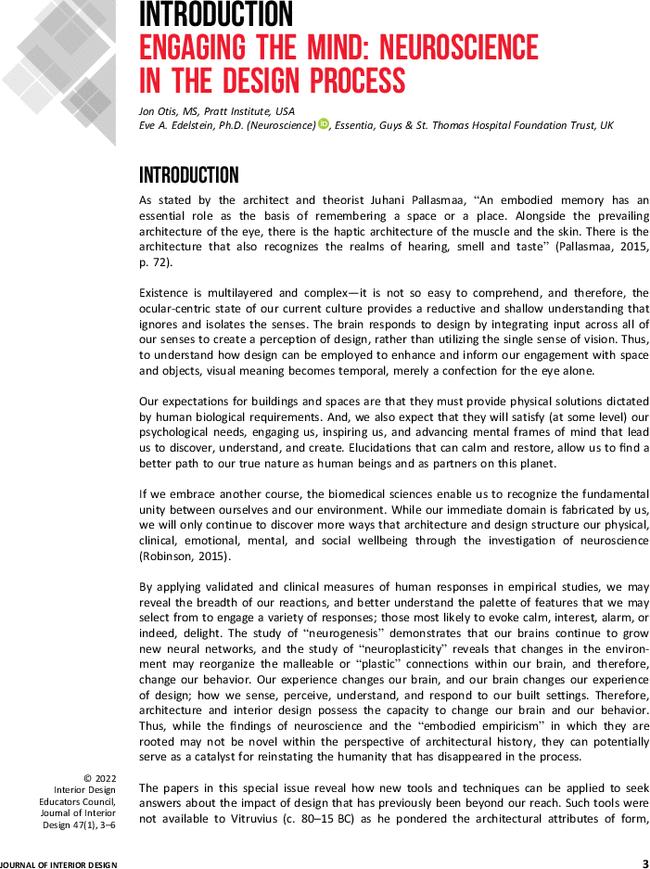Engaging the Mind: Neuroscience in the Design Process
IF 1.2
2区 艺术学
0 ARCHITECTURE
引用次数: 0
Abstract
Existence is multilayered and complex—it is not so easy to comprehend, and therefore, the ocular-centric state of our current culture provides a reductive and shallow understanding that ignores and isolates the senses. The brain responds to design by integrating input across all of our senses to create a perception of design, rather than utilizing the single sense of vision. Thus, to understand how design can be employed to enhance and inform our engagement with space and objects, visual meaning becomes temporal, merely a confection for the eye alone.

参与思维:设计过程中的神经科学
存在是多层次的、复杂的——它不那么容易理解,因此,我们当前文化中以眼睛为中心的状态提供了一种简化和肤浅的理解,忽视和孤立了感官。大脑对设计的反应是通过整合我们所有感官的输入来创造对设计的感知,而不是利用单一的视觉。因此,为了理解如何利用设计来增强和告知我们与空间和物体的接触,视觉意义变得暂时,仅仅是眼睛的甜点。
本文章由计算机程序翻译,如有差异,请以英文原文为准。
求助全文
约1分钟内获得全文
求助全文
来源期刊

Journal of Interior Design
ARCHITECTURE-
CiteScore
2.50
自引率
30.80%
发文量
24
期刊介绍:
The Journal of Interior Design is a scholarly, refereed publication dedicated to issues related to the design of the interior environment. Scholarly inquiry representing the entire spectrum of interior design theory, research, education and practice is invited. Submissions are encouraged from educators, designers, anthropologists, architects, historians, psychologists, sociologists, or others interested in interior design.
 求助内容:
求助内容: 应助结果提醒方式:
应助结果提醒方式:


